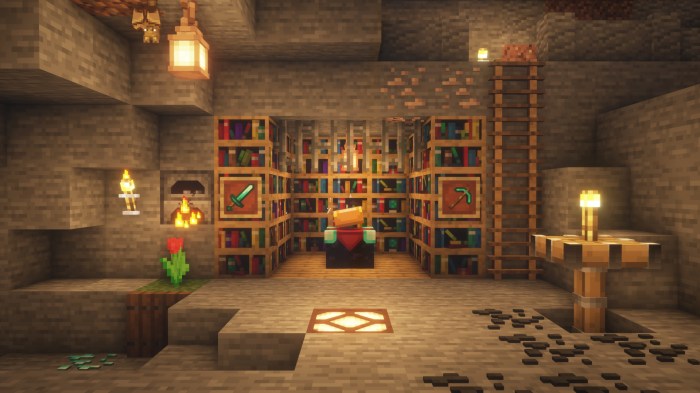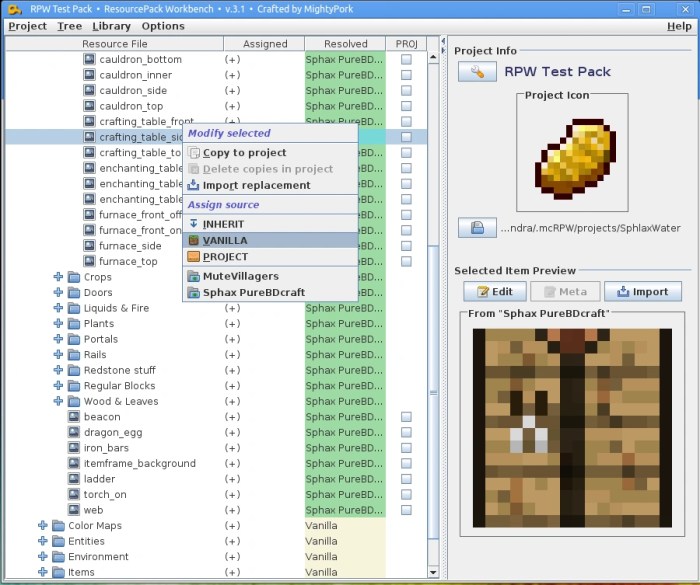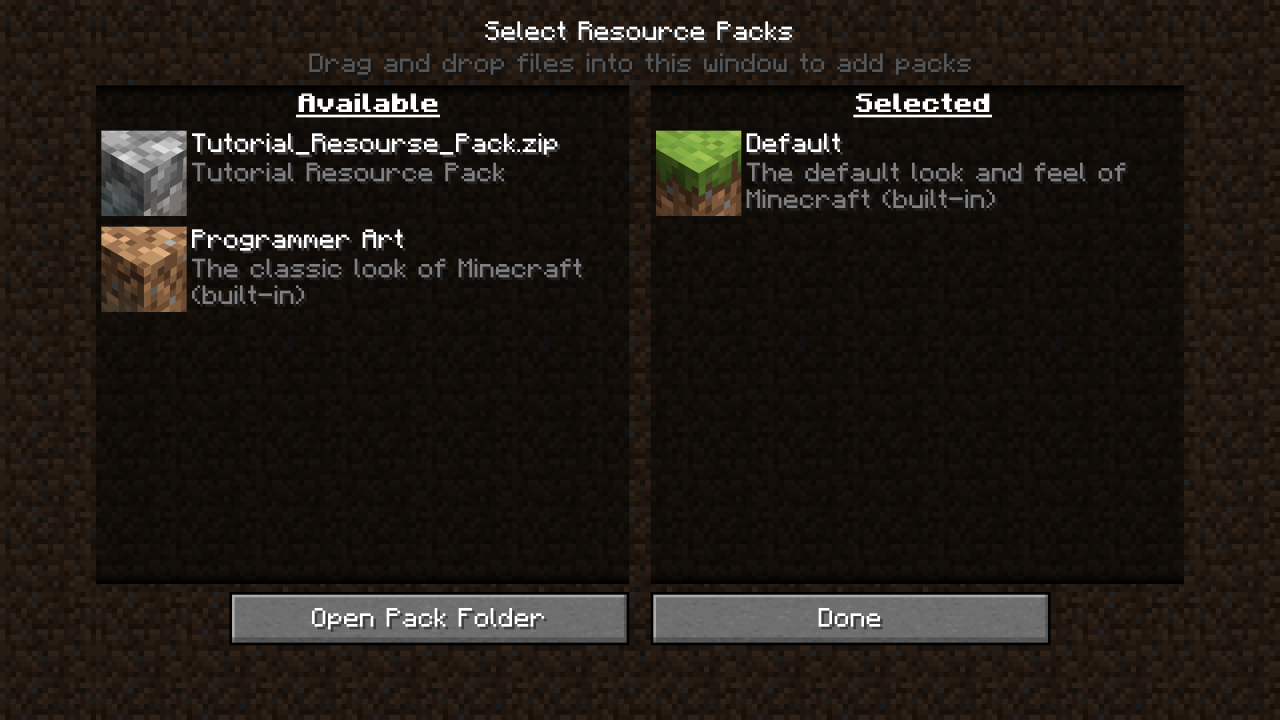A Guide to Creating Custom 3D Minecraft Resource Packs sets the stage for this enthralling narrative, offering readers a glimpse into a story that is rich in detail and brimming with originality from the outset. This guide will take you on a journey through the world of Minecraft resource packs, empowering you to transform the familiar into the extraordinary.
From understanding the basics of resource pack structure to mastering advanced techniques like 3D modeling and animation, you’ll gain the knowledge and skills to create truly unique and immersive experiences within the beloved sandbox game.
Imagine breathing new life into Minecraft, crafting your own textures, sounds, models, and even gameplay elements. The possibilities are endless, and with this comprehensive guide, you’ll have the tools and knowledge to turn your wildest Minecraft visions into reality.
Whether you’re a seasoned Minecraft enthusiast or a curious newcomer, this guide will equip you with the skills to embark on a creative adventure unlike any other.
Introduction
A Minecraft resource pack is a collection of files that modify the game’s appearance, sounds, and even gameplay elements. Think of it as a custom skin for your Minecraft world, allowing you to personalize everything from the textures of blocks to the sounds of mobs.
Creating your own resource pack opens up a world of possibilities for customizing your Minecraft experience. You can enhance the visual appeal of the game, add immersive soundscapes, or even introduce entirely new gameplay mechanics.
Resource packs can modify various aspects of Minecraft, including:
- Textures:Change the appearance of blocks, items, mobs, and other in-game elements.
- Sounds:Replace or add sound effects for actions, mobs, and environments.
- Models:Create custom 3D models for blocks, entities, and items.
- Gameplay Elements:Add or modify recipes, enchantments, advancements, and other game mechanics.
- Animations:Create custom animations for blocks, entities, or items.
Setting Up Your Development Environment
Before diving into the world of resource pack creation, you’ll need to set up a development environment with the right tools. Here’s a step-by-step guide to get you started:
1. Download Minecraft
You’ll need a copy of Minecraft to test your resource pack. You can download it from the official Minecraft website. Make sure you have the Java Edition of the game, as resource packs are not compatible with the Bedrock Edition.
2. Install a Text Editor
You’ll need a text editor to work with the resource pack files. There are many excellent free and paid text editors available, such as:
- Notepad++ (Windows):A popular and powerful text editor with syntax highlighting and other useful features.
- Sublime Text (Windows, macOS, Linux):A fast and customizable text editor with a wide range of plugins.
- Visual Studio Code (Windows, macOS, Linux):A versatile code editor with support for many programming languages and extensions.
3. Install a Resource Pack Manager
While not strictly necessary, a resource pack manager can make it easier to organize, manage, and test your resource packs. Some popular options include:
- Resource Pack Manager (R.P.M.):A free and open-source resource pack manager for Minecraft.
- MCPatcher:A tool that allows you to apply resource packs and other modifications to Minecraft.
4. Create a New Resource Pack Project
Once you have the necessary tools installed, you can create a new resource pack project. This typically involves creating a new folder and organizing it with the appropriate subfolders and files. The specific structure of a resource pack will be discussed in the next section.
Understanding Resource Pack Structure
A Minecraft resource pack is organized into a hierarchical folder structure, with each subfolder containing specific types of files. Understanding this structure is crucial for creating and managing your resource pack.
1. The Root Folder
The root folder of your resource pack is where you’ll place all the other subfolders and files. It should be named after your resource pack, for example, “MyCustomResourcePack”.
2. The “assets” Folder
The “assets” folder contains all the game assets, such as textures, sounds, models, and language files. It is further divided into subfolders based on the type of asset.
- “minecraft” Folder:Contains the core assets for Minecraft, such as block textures, item textures, sound effects, and language files.
- “your_mod_id” Folder:This folder is used for custom assets that you create for your resource pack. The “your_mod_id” part should be replaced with a unique identifier for your resource pack.
3. The “pack.mcmeta” File

The “pack.mcmeta” file is located in the root folder of your resource pack and contains metadata about the pack. It specifies the pack’s name, description, and other important information.
Here’s an example of a “pack.mcmeta” file:
"pack":
"pack_format": 4,
"description": "My Custom Resource Pack",
"pack_version": "1.0"
4. The “lang” Folder
The “lang” folder, located within the “assets/minecraft” folder, contains language files that define the text displayed in the game. These files are typically in JSON format and use a key-value pair structure to map text keys to their corresponding translations.
Modifying Textures
Textures are the visual elements that give Minecraft its unique look and feel. Modifying textures is a fundamental aspect of resource pack creation. You can change the appearance of blocks, items, mobs, and even the user interface.
1. Understanding Texture Formats
Minecraft supports various image formats for textures, including:
- PNG:The most common image format used for Minecraft textures. It supports transparency and is generally well-suited for resource packs.
- JPG:A compressed image format that can be used for textures, but it doesn’t support transparency.
- GIF:An animated image format that can be used for creating animated textures, but it’s not as widely used as PNG.
2. Creating and Replacing Textures

To create or replace textures, you’ll need an image editing software such as Adobe Photoshop, GIMP, or Paint.NET. When creating new textures, make sure they adhere to the following guidelines:
- Texture Size:Minecraft textures are typically 16×16 pixels, but you can use larger sizes for higher resolution. However, larger textures can impact performance.
- Transparency:Use transparency to create holes or see-through elements in your textures.
- Color Palette:Use a limited color palette to maintain the style of Minecraft.
To replace an existing texture, simply create a new texture with the same name as the original texture and place it in the appropriate subfolder within the “assets” folder. For example, to replace the texture of a block of stone, you would create a new texture file named “stone.png” and place it in the “assets/minecraft/textures/block” folder.
3. Optimizing Textures for Performance
While using high-resolution textures can enhance the visual appeal of your resource pack, it can also impact performance, especially on older or less powerful computers. Here are some techniques for optimizing textures:
- Reduce Texture Size:Smaller textures require less memory and processing power, leading to better performance.
- Compress Textures:Compressing textures can reduce their file size without significantly affecting their quality. PNG supports lossless compression, which preserves the original quality.
- Use Fewer Colors:A limited color palette can reduce the amount of data needed to store the texture, leading to smaller file sizes.
Customizing Sounds: A Guide To Creating Custom 3D Minecraft Resource Packs
Sounds play a crucial role in creating an immersive Minecraft experience. By customizing the sounds in your resource pack, you can enhance the atmosphere, add unique effects, and even create entirely new soundscapes.
1. Understanding Sound File Formats
Minecraft supports various sound file formats, including:
- OGG:A compressed audio format that is commonly used for Minecraft sound effects.
- WAV:An uncompressed audio format that can be used for high-quality sound effects, but it results in larger file sizes.
- MP3:A compressed audio format that can be used for sound effects, but it’s not as widely used as OGG or WAV.
2. Adding and Replacing Sound Effects
To add or replace sound effects, you’ll need to create or obtain sound files in a compatible format. These files should be placed in the appropriate subfolder within the “assets/minecraft/sounds” folder.
For example, to replace the sound of a block of wood being placed, you would create a new sound file named “block.wood.place.ogg” and place it in the “assets/minecraft/sounds/block” folder.
3. Creating Immersive Sound Experiences
Here are some tips for creating immersive sound experiences with your resource pack:
- Use Ambient Sounds:Add ambient sounds to create a sense of atmosphere and realism. For example, you could add the sound of wind blowing through trees or birds chirping in the background.
- Create Unique Sound Effects:Design unique sound effects for actions, mobs, and other in-game elements to make your resource pack stand out.
- Use Spatialization:Use spatialization techniques to make sounds seem like they are coming from specific locations in the game world.
Crafting Models
Minecraft models are 3D representations of blocks, entities, and items. Creating custom models allows you to introduce new objects, modify the appearance of existing ones, or even create entirely new gameplay elements.
1. Block Models
Block models define the shape and appearance of blocks in the game. They are typically created using 3D modeling software such as Blender, Maya, or 3ds Max.
2. Entity Models
Entity models define the shape and appearance of entities, such as mobs, players, and items. They are also typically created using 3D modeling software.
3. Creating Custom Models
Here’s a general guide for creating custom models using 3D modeling software:
- Choose Your Modeling Software:Select a 3D modeling software that you are comfortable with. Blender is a popular free and open-source option.
- Create the Model:Model the object you want to create. Ensure that the model is properly scaled and textured.
- Export the Model:Export the model in a format that Minecraft supports, such as JSON or OBJ.
- Configure the Model:Place the exported model file in the appropriate subfolder within the “assets/minecraft/models” folder. You may need to create a new JSON file to configure the model’s properties, such as its texture, animation, and other settings.
4. Importing and Configuring Models
Once you have created a custom model, you need to import it into your resource pack and configure its settings. This typically involves placing the model file in the correct subfolder and creating a JSON file to define its properties.
Enhancing Gameplay Elements
Resource packs can go beyond visual and audio customization to enhance gameplay elements. You can add or modify recipes, enchantments, advancements, and other game mechanics to create unique and engaging experiences.
1. Custom Recipes

You can create new crafting recipes or modify existing ones to introduce new items, change the crafting requirements, or create more efficient ways to obtain resources.
2. Custom Enchantments
Enchantments add special effects to tools, weapons, and armor. You can create new enchantments or modify existing ones to introduce new gameplay mechanics or balance existing ones.
3. Custom Advancements
Advancements are achievements that players can unlock in the game. You can create new advancements to guide players through new content or reward them for specific actions.
4. Integrating Gameplay Elements
To integrate custom gameplay elements into your resource pack, you’ll need to create or modify JSON files that define the new recipes, enchantments, or advancements. These files should be placed in the appropriate subfolders within the “assets/minecraft” folder.
Implementing Custom Animations
Animations bring your resource pack to life, adding dynamism and visual interest to blocks, entities, or items. You can create custom animations to make your resource pack more engaging and immersive.
1. Understanding Animation Frames
Animations are created using a series of frames, each representing a snapshot of the object’s position and orientation at a specific point in time. These frames are typically stored in a JSON file.
2. Creating Custom Animations, A Guide to Creating Custom 3D Minecraft Resource Packs
You can create custom animations using 3D modeling software or animation tools. Here’s a general guide for creating animations:
- Choose Your Animation Software:Select a software that supports creating animations for 3D models. Blender is a popular option for both modeling and animation.
- Define the Animation:Determine the keyframes and movements for your animation. You can use animation software tools to create these keyframes.
- Export the Animation:Export the animation in a format that Minecraft supports, such as JSON.
- Configure the Animation:Place the exported animation file in the appropriate subfolder within the “assets/minecraft/animations” folder. You may need to create a new JSON file to configure the animation’s properties, such as its duration, speed, and other settings.
3. Optimizing Animation Performance
Here are some tips for optimizing animation performance:
- Use Fewer Frames:Reducing the number of frames in your animation can improve performance, especially for complex animations.
- Compress Animation Data:Compressing the animation data can reduce its file size, leading to faster loading times.
- Optimize Animation Code:If you are creating animations using custom code, optimize the code for efficiency and performance.
Testing and Debugging
Once you have created your resource pack, it’s important to test it thoroughly to ensure that it works correctly and doesn’t introduce any bugs or errors.
1. Testing Your Resource Pack
To test your resource pack, you can load it in Minecraft and explore the game world to see how it looks and behaves. You can also use the “F3” debug screen to view various game statistics and information, which can help you identify potential issues.
2. Common Troubleshooting Tips
Here are some common troubleshooting tips for resource packs:
- Check for File Errors:Make sure that all the files in your resource pack are correctly named and placed in the appropriate subfolders.
- Verify Texture Sizes:Ensure that your textures are the correct size and format for Minecraft.
- Test Sound Effects:Verify that your sound effects are working correctly and are placed in the appropriate subfolders.
- Check for Conflicts:If you are using multiple resource packs, make sure they don’t conflict with each other.
- Consult the Minecraft Wiki:The Minecraft Wiki provides extensive documentation on resource packs and troubleshooting tips.
3. Debugging Techniques
If you encounter errors or bugs, you can use debugging techniques to identify and fix them. Some common debugging techniques include:
- Use the “F3” Debug Screen:The “F3” debug screen provides information about the game’s state, which can help you identify problems.
- Log Files:Minecraft generates log files that record errors and other events. These logs can be helpful for debugging.
- Use a Debugger:If you are using custom code, you can use a debugger to step through the code and identify problems.
Epilogue
As you delve deeper into the world of custom Minecraft resource packs, you’ll discover that the only limit is your imagination. With each step, you’ll gain a greater appreciation for the intricate details that contribute to the immersive world of Minecraft, and you’ll find yourself empowered to shape that world in ways never before imagined.
So, embrace your creativity, experiment with different techniques, and unleash your inner Minecraft master. The world of Minecraft is waiting to be transformed, and you have the power to make it happen.
Top FAQs
What software do I need to create custom 3D Minecraft resource packs?
You’ll need a 3D modeling software like Blender or Maya to create custom models, and a texture editor like GIMP or Photoshop to create and modify textures. You’ll also need a text editor to work with JSON files and a resource pack manager like MCPatcher or Optifine to install and manage your resource packs.
Can I create custom animations for blocks and entities in my resource pack?
Yes, you can! Minecraft allows you to create custom animations for blocks, entities, and items using animation frames. You can create these animations using 3D modeling software and then import them into your resource pack.
How do I share my custom resource pack with others?
You can share your resource pack on platforms like Planet Minecraft, CurseForge, or GitHub. You can also create a website or blog to showcase your work and provide download links for your resource pack.